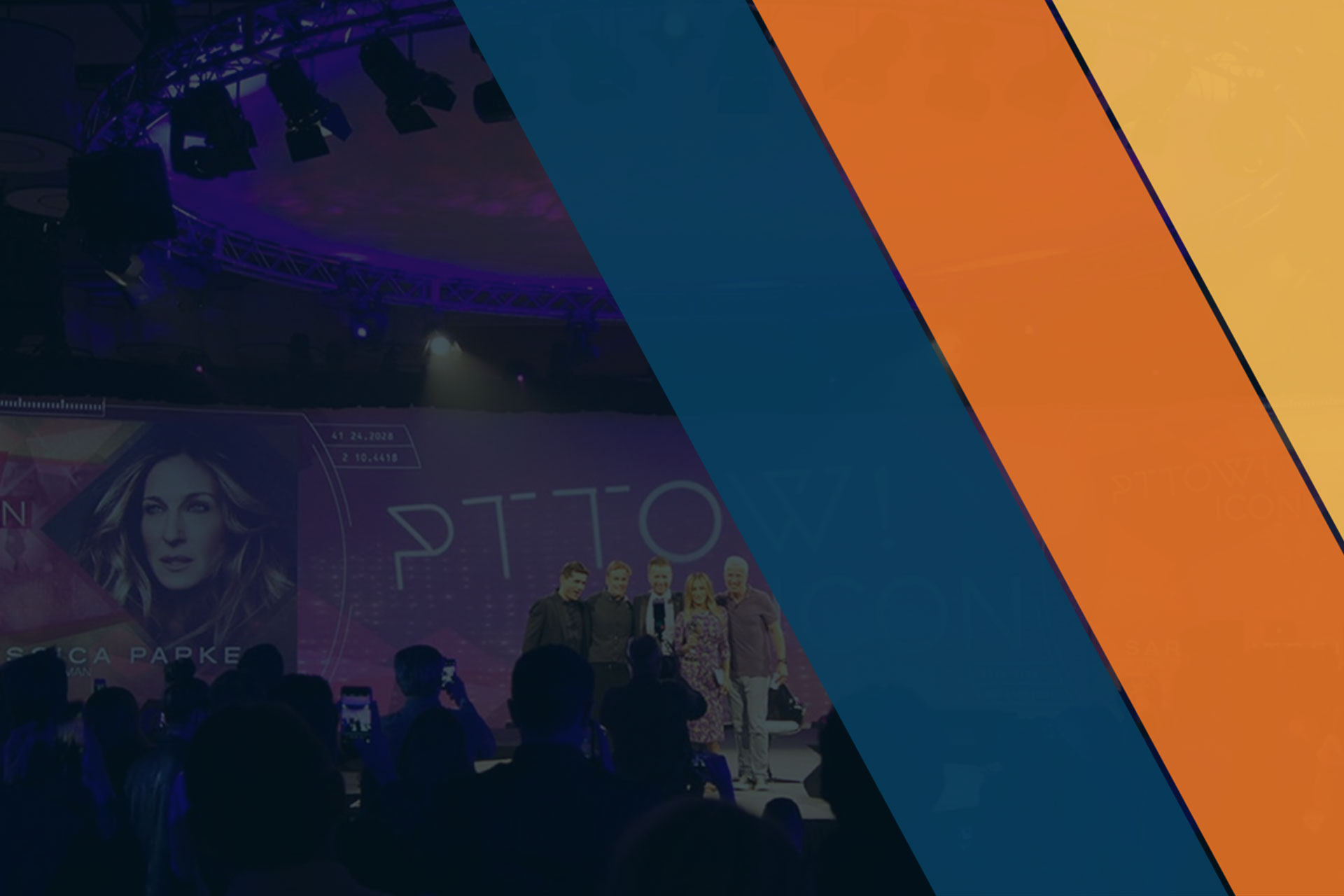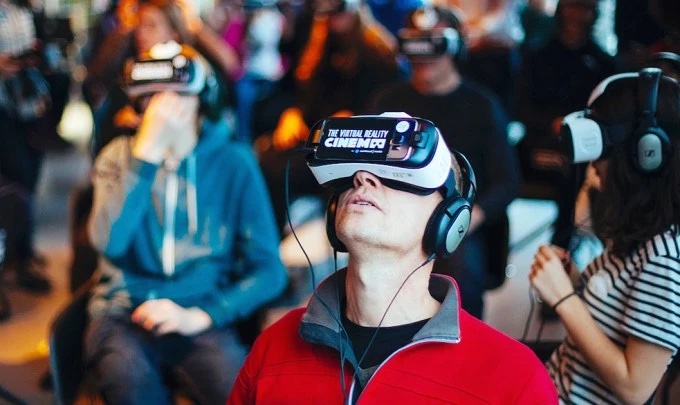

Getting Started with Virtual Reality for Your Next Event

VR into your events - Image Source
The intersection of virtual reality (VR) and event marketing continues to develop, bringing a unique way to enhance the attendee experience. As VR offerings become more dynamic and accessible, event marketers need to understand how to wield this powerful new experiential marketing tactic to deliver outstanding content experiences.
We have created this guide to help event professionals effectively integrate VR into their events to captivate their audience. Here’s what you need to know when implementing this new technology:
What do I need to set up a VR experience?
Desktop versus Mobile VR
In most cases, VR is experienced through various types of desktop or mobile devices and applications. If you choose a Desktop VR experience, you will have to set up a dedicated station, with a device such as an Oculus Rift connected to a computer. At this point in time, desktop VR offers a more seamless viewing experience, however, it’s not as accessible as mobile VR.
Mobile VR takes advantage of smartphone technology, accompanied by a VR device, such as Google Cardboard or Samsung Gear. This is a much more cost-effective way to deliver VR content during an event, as it takes advantage of the smartphones that people already own. With the added benefit of mobility, event marketers can create even more unique experiences, whereas desktop VR is stuck in place.
Content Ideas for Virtual Reality Experiences
There are a few different ways to create content for VR experiences at your upcoming event.
Real-Life 360-Degree Videos
One of the easiest and most affordable ways to create an immersive VR experience, a 360-degree video is a good choice. This type of VR content creation captures any real-world environment, letting you manipulate however you’d like.
First, you’ll need some equipment to accomplish this, including a 360-degree camera. Your options can range in price, from the entry-level Giroptic 360cam (pictured below) for $499, up to $15,000 for professional GoPro Odyssey camera.
The Giroptic 360cam - Image Source
Additionally, you’ll need some sort of stabilizer, such as a sturdy tripod or Steadicam mounts. This is incredibly important when shooting video for VR. If you don’t maintain even movements and keep the camera in a constant position, the user can suffer motion sickness.
After you’ve captured the video you need, you’ll move into the post-production phase and begin editing your footage. A few of the more popular platforms include:
VideoStitch
VideoStitch makes stitching and editing 360-degree video faster and easier. Upload your videos and the program guides you seamlessly towards the creation of your VR video.
Kolor Video
Kolor Autopano is one of the first 360-degree video automation platforms available. One of best features of Kolor Autopano Video is the ability to combine videos into a single shot the covers the entire 360 degrees.
YouVisit’s Experience builder
YouVisit is a free 360-degree virtual reality content creation platform, allowing users to host and share your 360° photos and videos.
While the 360-degree method is easy and affordable, it can only render real-world elements. If you want to create a unique environment, a 3D animation is the way to do it.
Customized Experiences with 3D Animation
A VR 3D animation in production - Image Source
If you want to create something truly unique, something you can’t capture in the real world, a 3D animation is your best option. With a animation for VR, a user can freely look about the space the user is in, occupying whichever type of world you want to create.
This type of VR content provides the user with a more authentic experience. They can move freely throughout the VR environment, zoom in on objects and interact with virtual elements as they would in the real world. While still new, this method of content development has the potential to one day be the primary way VR content is developed.
There are a few programs out there that you can use to easily begin building 3D-animated environments.
One of the most popular ways to develop VR content is to purchase the Structure Sensor. This handy camera attaches directly to your tablet, acting as a 3D scanner, capturing your surroundings and instantly rendering 3D models out of it.
For non-developers that want to create a VR app, head to The ENTiTi Creator platform, a first-to-market platform for the development of interactive and immersive VR content. With an easy-to-use drag-and-drop interface and cloud-based system, anyone can start building a virtual experience.
If you’d rather take a more in-depth approach to 3D-animated VR content, computer graphics (CGI) are the professional choice. This is the same method through which video games are produced, and these same game engines also work well for crafting other non-gaming 3D constructions. Take a look at some of the more popular game engines below:
Unity
Unity is one of the most popular development tools today, supporting three development languages, including C#, UnityScript, and Boo. With both a free option and a paid pro one, Unity is a good choice for a wide range of development skill levels.
Unreal Engine
Unreal is a gaming engine created by Epic Games. It supports only the C++ development language. Blueprint visual scripting system, Matinee timeline-based machine, Persona animation system and the cinematic system.
Other Technical Factors to Consider
Throughout the course of developing VR content for your upcoming event, you’ll most likely come up with a lot of technical questions. When implemented correctly, VR will leave the user will have a good experience; on the other hand, if done wrong, users can suffer dizziness or motion sickness and will leave dissatisfied with the experience. It’s important to consider all the technical aspects of VR implementation.
Stabilizing the Camera
One of the biggest keys to offering a clear, high-quality VR experience happens during production. The camera must be stable when shooting your production video. Since VR is first-person, it’s inherently shaky, so it’s best to avoid shaky, abrupt or bumpy shots. One common mistake is to use a bumpy camera to emulate walking -- try to avoid this and use steady movements instead.
Peripheral Vision
We all know what peripheral vision is; a developer should take advantage of the physiological design of the human eye so users can see items that they’re focusing on clearly, while everything else seems slightly fuzzy. Using eye-tracking technology, you can implement peripheral enhancements, showing the most detailed areas where the eye is focused, while the rest of the scene is rendered in a slightly blurry, low-resolution format.
Keep a High Frame Rate
Frame rates are another key aspect of creating a seamless VR experience. You need your experience to run at 75FPS on most PCs. With this high rate, the video should appear as a real-life immersion. It’s difficult for the user to stay engaged when overly demanding graphics and audio make the video slow and choppy.
The VR/Event Marketing Intersection: What to Know about Increasing Audience Engagement:
Now that you know the technical factors that contribute to a strong VR experience, let’s discuss the other half of that, which includes the content that will actually engage your audience.
What Role Will VR Play in The Campaign?
Before getting started with purchasing your technology and designing your experience, consider what the goals of your VR campaign are. Decide on how your brand will use VR to its benefit to achieve your event goals. Also, figure out what is the best implementation of VR for the event itself.
Will there be a high consumer turnover for the experience? If this is the case, then the experience will have to be quick and attention-grabbing to get a message across in a short amount of time.
Or, will your VR efforts be the main focus of your campaign? If this is the case, you may want to bump up the budget or hire an extra designer to ensure that there are no performance issues and that your message is effective.
These decisions will help you determine what type of resources this undertaking will this consume. For instance, you will need at least a few employees on hand to assist with people if you have a plug and play setup, like Google Cardboard. Otherwise, you should have one employee for each device if you have something more expensive setup, like a $600 HTC Vive.
The Google Cardboard - a mobile device is placed in the opening and enclosed to create a VR experience - Image Source
Think Virtual Reality will be a perfect fit for your next event? Our experts are more than happy to help you plan this experience.

